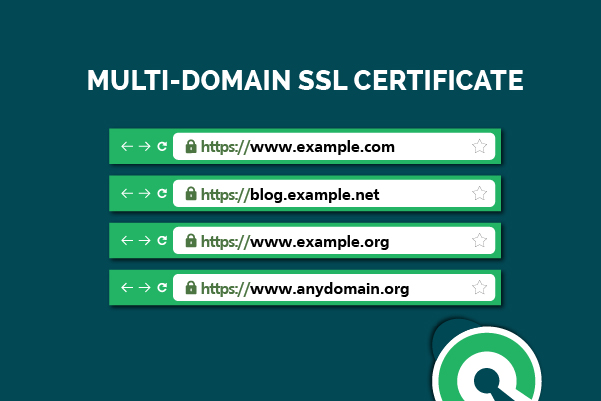With a SAN or multi domain SSL certificate, you may safeguard multiple domains with a single layer of security. The primary goal of this certification is to provide the highest level of safety at the most economical cost.
Maintaining data integrity during transmission is essential for establishing trust in the data at the receiving end. In addition, the information between the client and the server is strongly encrypted at every byte.
With a SSL certificate, you can secure multiple domains and subdomains at several levels with one certificate, saving you money and hassle.
The information is bound by encryption, man-in-the-middle attacks, and data sniffing extremely difficult, if not impossible. Customers are more likely to visit a website that uses encryption to safeguard its users’ personal information.
How to Obtain Multi-Domain SSL Certificate?
A multi domain certificate can be obtained quickly and painlessly.
- A simple registration with an SSL service provider is all that is required
- Choose the item and give the seller the money.
- Making a Certificate Signing Request (CSR) on the server and completing the configuration process
- Check the domain’s validity, and then order your certificate.
When an SSL certificate is obtained, it must be uploaded to the server. If you aren’t tech-savvy but still want to try it, you can always contact customer service for some installation guidance.
Click here – What to Look for When Attending an Online Car Auction in North Carolina
Advantages of a Multi-Domain SSL Certificate
Multi-domain certificates are helpful for businesses that operate under multiple domain names or have various divisions of a larger organization.
Price Cuts:
Rather than purchasing separate certificates for each domain, a multi-domain certificate can secure an entire network for a fraction of the price. Buying an SSL certificate for each domain or subdomain you wish to connect is time-consuming. Multi-domain hosting is another option for keeping all domain names safe.
Site Seal:
A trust seal is included with these certificates to encourage customers to do business on the website. There are both stationary and moving site seals. Site seals can be either static images showing the site is secure or dynamic images that update in real-time to reflect any changes to the company’s verified information.
Compatibility with Browsers:
Browsers will not display SSL warnings when using a SAN SSL certificate. A sign in the browser prevents users from accessing the site if the certificate is incompatible. Multi-domain certificates, on the other hand, can be used with any device, OS, or browser.
Click here – Salwar Kameez Dress Ideas for The 2023 Eid Festival
Validations of Many Kinds:
A customer has several alternatives for multi-domain SSL, including domain, organization, and extended validation process kinds. Each type of validation has its own set of steps that must be taken to obtain the necessary certificate. When compared to a structured and lengthy validation process, domain validation is straightforward.
Final Thoughts
Enterprises that want to consolidate their SSL needs across all their domains and subdomains while saving money can benefit from a multi-domain certificate. In addition, you can manage certificates for all your covered domains from a single location. Multi-domain SSL renewals are convenient since they eliminate the need to track down and renew individual domain certificates. Provide your consumers with a breath of comfort and an affordable sigh of relief by securing their domains with high encryption standards.

